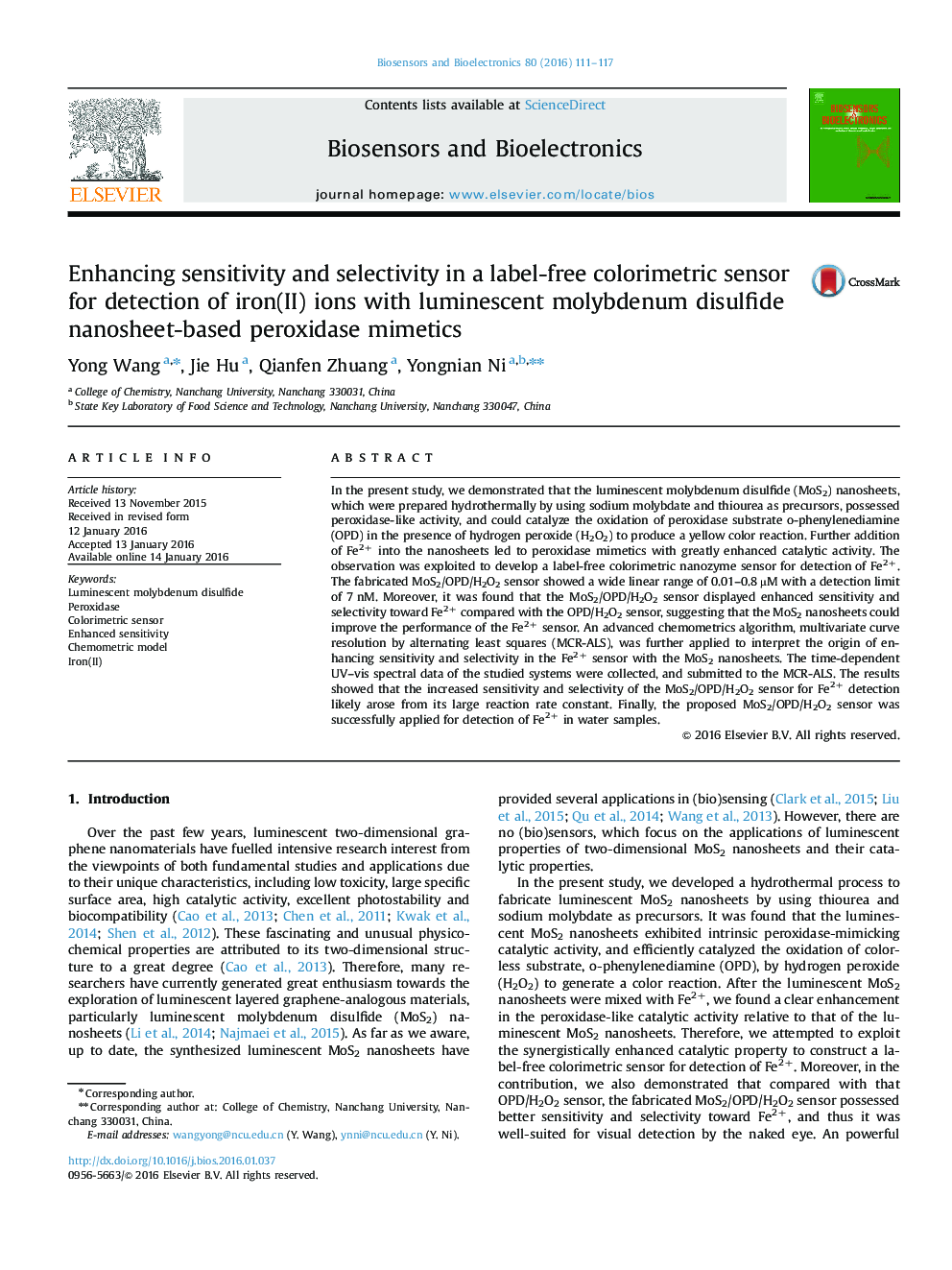| Article ID | Journal | Published Year | Pages | File Type |
|---|---|---|---|---|
| 7230657 | Biosensors and Bioelectronics | 2016 | 7 Pages |
Abstract
In the present study, we demonstrated that the luminescent molybdenum disulfide (MoS2) nanosheets, which were prepared hydrothermally by using sodium molybdate and thiourea as precursors, possessed peroxidase-like activity, and could catalyze the oxidation of peroxidase substrate o-phenylenediamine (OPD) in the presence of hydrogen peroxide (H2O2) to produce a yellow color reaction. Further addition of Fe2+ into the nanosheets led to peroxidase mimetics with greatly enhanced catalytic activity. The observation was exploited to develop a label-free colorimetric nanozyme sensor for detection of Fe2+. The fabricated MoS2/OPD/H2O2 sensor showed a wide linear range of 0.01-0.8 µM with a detection limit of 7 nM. Moreover, it was found that the MoS2/OPD/H2O2 sensor displayed enhanced sensitivity and selectivity toward Fe2+ compared with the OPD/H2O2 sensor, suggesting that the MoS2 nanosheets could improve the performance of the Fe2+ sensor. An advanced chemometrics algorithm, multivariate curve resolution by alternating least squares (MCR-ALS), was further applied to interpret the origin of enhancing sensitivity and selectivity in the Fe2+ sensor with the MoS2 nanosheets. The time-dependent UV-vis spectral data of the studied systems were collected, and submitted to the MCR-ALS. The results showed that the increased sensitivity and selectivity of the MoS2/OPD/H2O2 sensor for Fe2+ detection likely arose from its large reaction rate constant. Finally, the proposed MoS2/OPD/H2O2 sensor was successfully applied for detection of Fe2+ in water samples.
Related Topics
Physical Sciences and Engineering
Chemistry
Analytical Chemistry
Authors
Yong Wang, Jie Hu, Qianfen Zhuang, Yongnian Ni,
